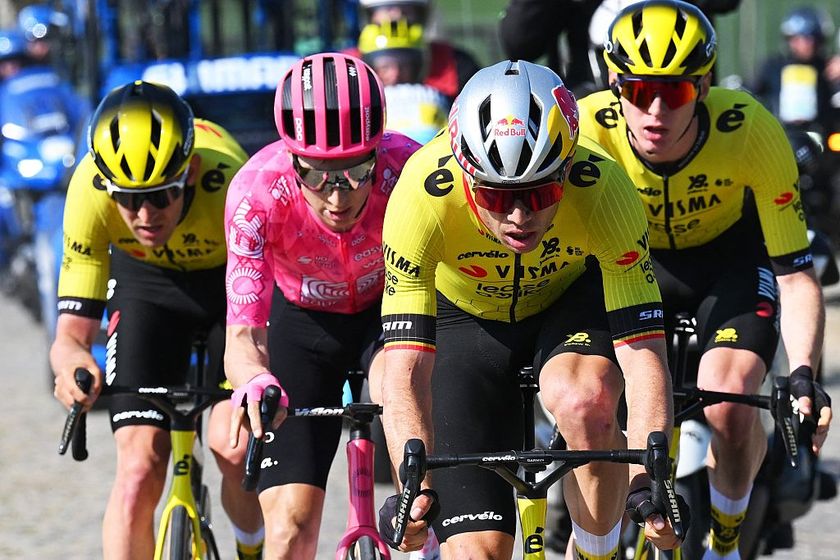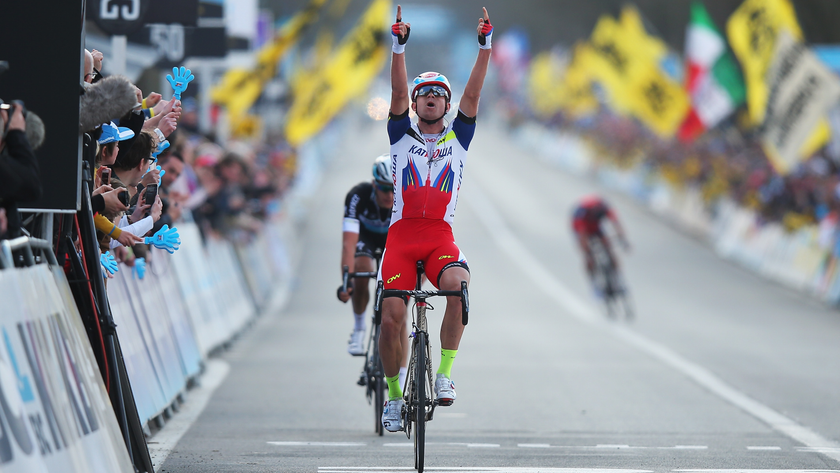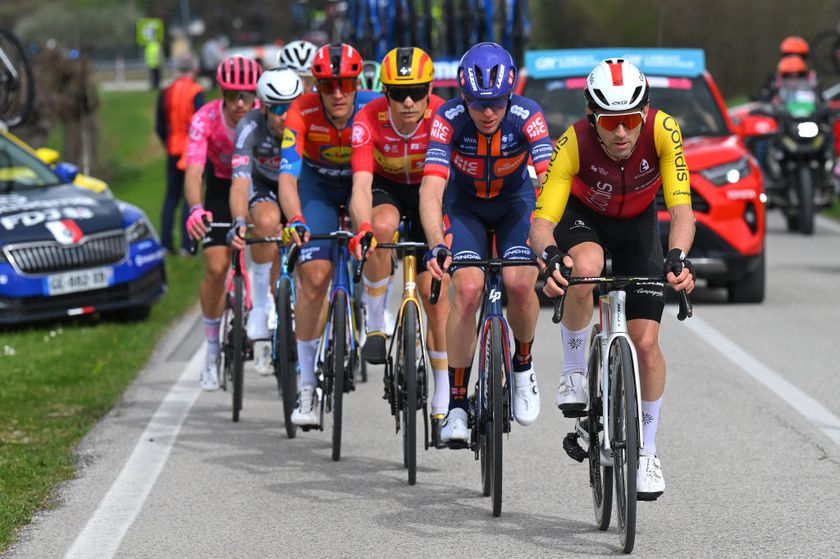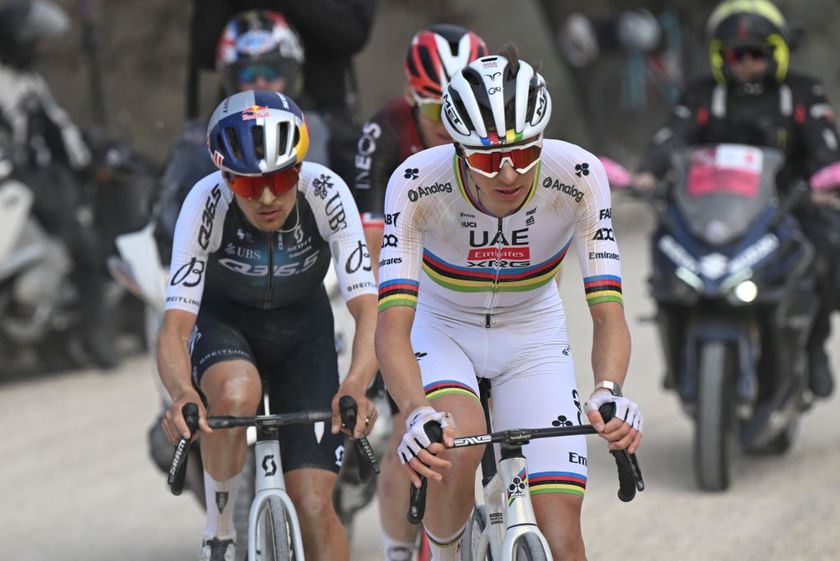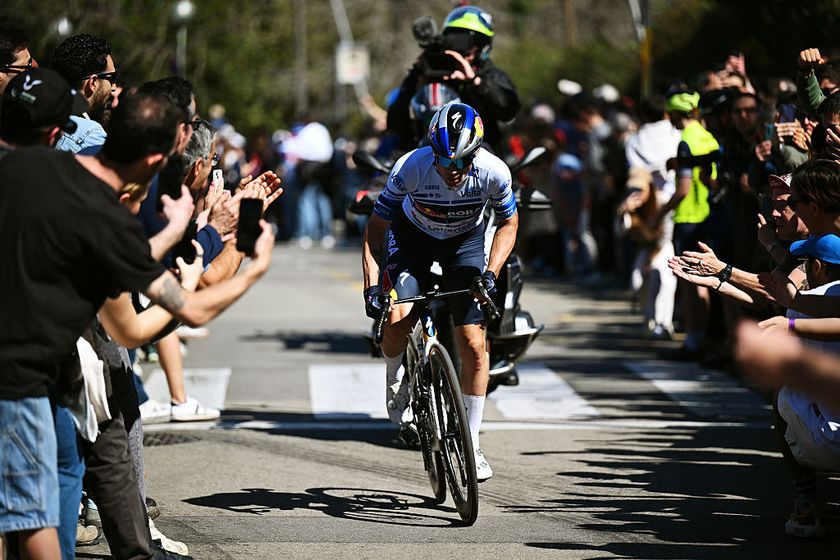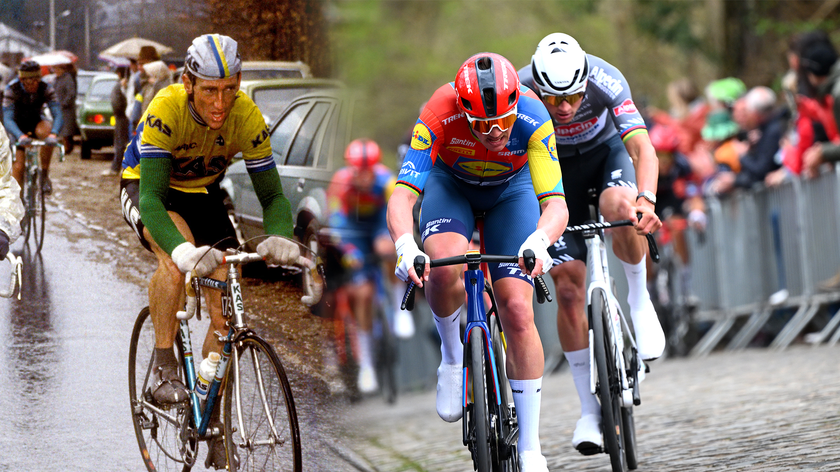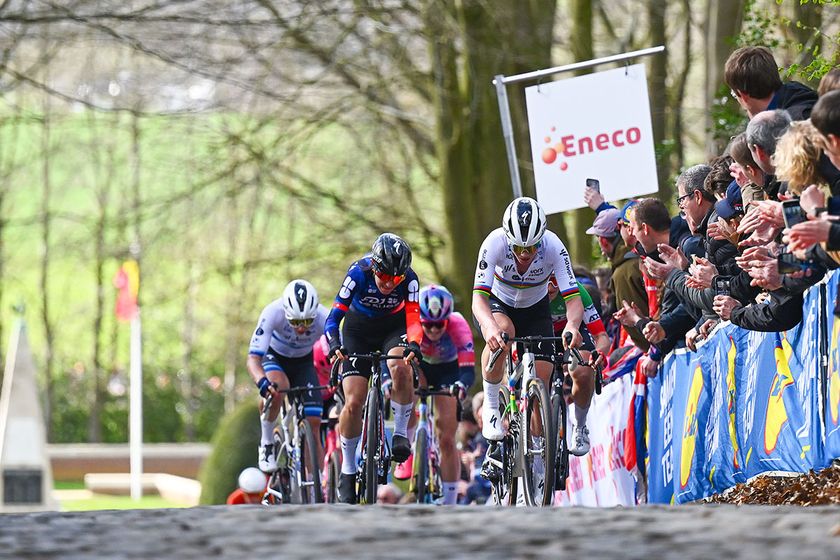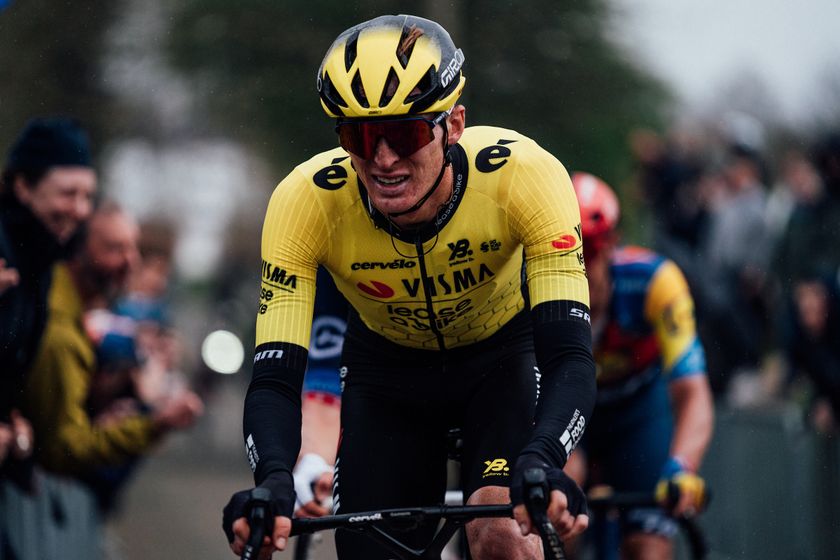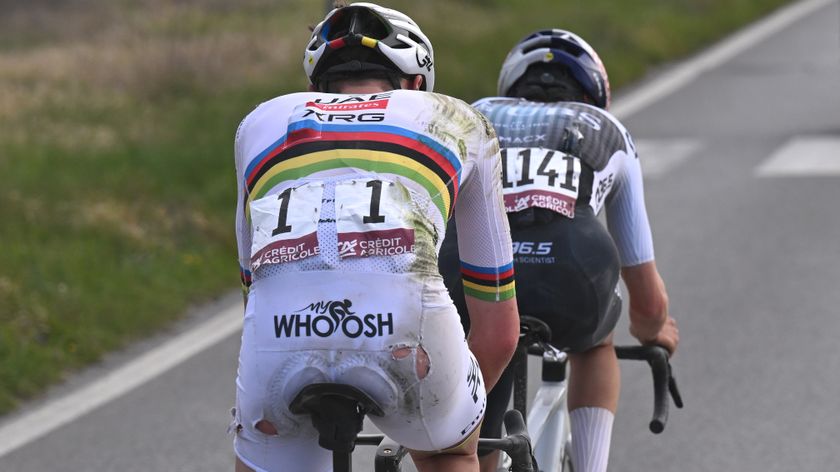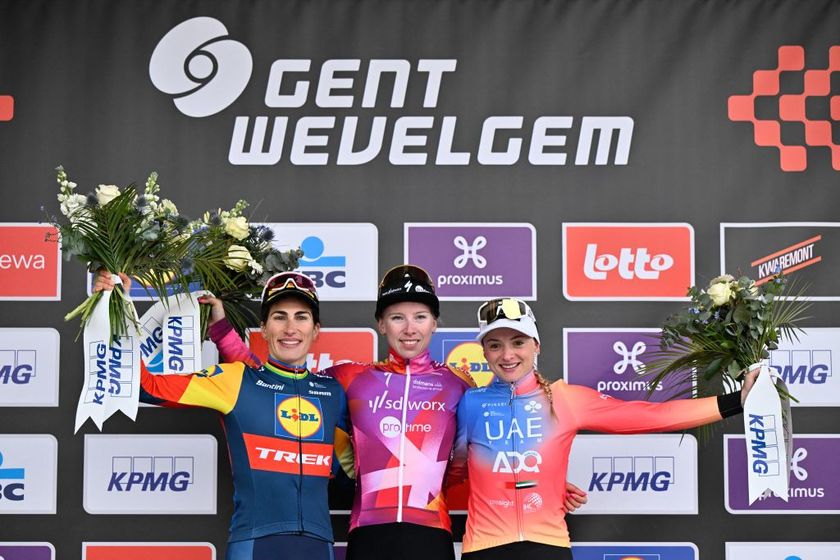Fitness questions and answers for August 8, 2005
Got a question about fitness, training, recovery from injury or a related subject? Drop us a line at...
Form & Fitness Q & A
Got a question about fitness, training, recovery from injury or a related subject? Drop us a line at fitness@cyclingnews.com. Please include as much information about yourself as possible, including your age, sex, and type of racing or riding. Due to the volume of questions we receive, we regret that we are unable to answer them all.
Carrie Cheadle, MA (www.carriecheadle.com) is a Sports Psychology consultant who has dedicated her career to helping athletes of all ages and abilities perform to their potential. Carrie specialises in working with cyclists, in disciplines ranging from track racing to mountain biking. She holds a bachelors degree in Psychology from Sonoma State University as well as a masters degree in Sport Psychology from John F. Kennedy University.
Dave Palese (www.davepalese.com) is a USA Cycling licensed coach and masters' class road racer with 16 years' race experience. He coaches racers and riders of all abilities from his home in southern Maine, USA, where he lives with his wife Sheryl, daughter Molly, and two cats, Miranda and Mu-Mu.
Kelby Bethards, MD received a Bachelor of Science in Electrical Engineering from Iowa State University (1994) before obtaining an M.D. from the University of Iowa College of Medicine in 2000. Has been a racing cyclist 'on and off' for 20 years, and when time allows, he races Cat 3 and 35+. He is a team physician for two local Ft Collins, CO, teams, and currently works Family Practice in multiple settings: rural, urgent care, inpatient and the like.
Fiona Lockhart (www.trainright.com) is a USA Cycling Expert Coach, and holds certifications from USA Weightlifting (Sports Performance Coach), the National Strength and Conditioning Association (Certified Strength and Conditioning Coach), and the National Academy for Sports Nutrition (Primary Sports Nutritionist). She is the Sports Science Editor for Carmichael Training Systems, and has been working in the strength and conditioning and endurance sports fields for over 10 years; she's also a competitive mountain biker.
Eddie Monnier (www.velo-fit.com) is a USA Cycling certified Elite Coach and a Category II racer. He holds undergraduate degrees in anthropology (with departmental honors) and philosophy from Emory University and an MBA from The Wharton School of Business.
Eddie is a proponent of training with power. He coaches cyclists (track, road and mountain bike) of all abilities and with wide ranging goals (with and without power meters). He uses internet tools to coach riders from any geography.
Get The Leadout Newsletter
The latest race content, interviews, features, reviews and expert buying guides, direct to your inbox!
David Fleckenstein, MPT (www.physiopt.com) is a physical therapist practicing in Boise, ID. His clients have included World and U.S. champions, Olympic athletes and numerous professional athletes. He received his B.S. in Biology/Genetics from Penn State and his Master's degree in Physical Therapy from Emory University. He specializes in manual medicine treatment and specific retraining of spine and joint stabilization musculature. He is a former Cat I road racer and Expert mountain biker.
Since 1986 Steve Hogg (www.cyclefitcentre.com) has owned and operated Pedal Pushers, a cycle shop specialising in rider positioning and custom bicycles. In that time he has positioned riders from all cycling disciplines and of all levels of ability with every concievable cycling problem.They include World and National champions at one end of the performance spectrum to amputees and people with disabilities at the other end.
Current riders that Steve has positioned include Davitamon-Lotto's Nick Gates, Discovery's Hayden Roulston, National Road Series champion, Jessica Ridder and National and State Time Trial champion, Peter Milostic.
Pamela Hinton has a bachelor's degree in Molecular Biology and a doctoral degree in Nutritional Sciences, both from the University of Wisconsin-Madison. She did postdoctoral training at Cornell University and is now an assistant professor of Nutritional Sciences at the University of Missouri-Columbia where she studies the effects of iron deficiency on adaptations to endurance training and the consequences of exercise-associated changes in menstrual function on bone health.
Pam was an All-American in track while at the UW. She started cycling competitively in 2003 and is the defending Missouri State Road Champion. Pam writes a nutrition column for Giana Roberge's Team Speed Queen Newsletter.
Dario Fredrick (www.wholeathlete.com) is an exercise physiologist and head coach for Whole Athlete™. He is a former category 1 & semi-pro MTB racer. Dario holds a masters degree in exercise science and a bachelors in sport psychology.
Scott Saifer (www.wenzelcoaching.com) has a Masters Degree in exercise physiology and sports psychology and has personally coached over 300 athletes of all levels in his 10 years of coaching with Wenzel Coaching.
Kendra Wenzel (www.wenzelcoaching.com) is a head coach with Wenzel Coaching with 17 years of racing and coaching experience and is coauthor of the book Bike Racing 101.
Steve Owens (www.coloradopremiertraining.com) is a USA Cycling certified coach, exercise physiologist and owner of Colorado Premier Training. Steve has worked with both the United States Olympic Committee and Guatemalan Olympic Committee as an Exercise Physiologist. He holds a B.S. in Exercise & Sports Science and currently works with multiple national champions, professionals and World Cup level cyclists.
Through his highly customized online training format, Steve and his handpicked team of coaches at Colorado Premier Training work with cyclists and multisport athletes around the world.
Brett Aitken (www.cycle2max.com) is a Sydney Olympic gold medalist. Born in Adelaide, Australia in 1971, Brett got into cycling through the cult sport of cycle speedway before crossing over into road and track racing. Since winning Olympic gold in the Madison with Scott McGrory, Brett has been working on his coaching business and his www.cycle2max.com website.
Richard Stern (www.cyclecoach.com) is Head Coach of Richard Stern Training, a Level 3 Coach with the Association of British Cycling Coaches, a Sports Scientist, and a writer. He has been professionally coaching cyclists and triathletes since 1998 at all levels from professional to recreational. He is a leading expert in coaching with power output and all power meters. Richard has been a competitive cyclist for 20 years
Andy Bloomer (www.cyclecoach.com) is an Associate Coach and sport scientist with Richard Stern Training. He is a member of the Association of British Cycling Coaches (ABCC) and a member of the British Association of Sport and Exercise Sciences (BASES). In his role as Exercise Physiologist at Staffordshire University Sports Performance Centre, he has conducted physiological testing and offered training and coaching advice to athletes from all sports for the past 4 years. Andy has been a competitive cyclist for many years.
Michael Smartt (www.cyclecoach.com) is an Associate Coach with Richard Stern Training. He holds a Masters degree in exercise physiology and is USA Cycling Expert Coach. Michael has been a competitive cyclist for over 10 years and has experience coaching road and off-road cyclists, triathletes and Paralympians.
Kim Morrow (www.elitefitcoach.com) has competed as a Professional Cyclist and Triathlete, is a certified USA Cycling Elite Coach, a 4-time U.S. Masters National Road Race Champion, and a Fitness Professional.
Her coaching group, eliteFITcoach, is based out of the Southeastern United States, although they coach athletes across North America. Kim also owns MyEnduranceCoach.com, a resource for cyclists, multisport athletes & endurance coaches around the globe, specializing in helping cycling and multisport athletes find a coach.
Hill training for flat races
Track bike versus road bike
Speedplay roll float
Giving blood
Commuting goals
Pedal spacers
Asymmetric calf muscles
Handlebar fit
Lower back spasm
Leg length discrepancy
Nerve damage #2
Bike position
Hill training for flat races
I am a 48 yr old male who is riding 100 - 150km per week and running on 'non-bike' days. Almost all of my training is in hilly country on some rough paved roads. Some gradients are in excess of 10%. I am 6'0" and weigh 165 lbs. My favourite ride is a 28km pretty steady climb and back home again. When I ride with friends at about my fitness level, I tend to get away from them in the hills, but if they are there in a sprint at the end, I lose! My competition events come in the form of a few triathlons a year, although I would like to try bicycle racing when I get a lighter bike. Question: am I making a mistake in only training in the hills for the competition events which are mostly flat? If so, what can I do in my daily riding to increase race efficiency? Thanks!
Jerry Unser
Jerry,
Track bike versus road bike
Is it better to have the lengths of your track bike and road bike the same? Or should one be longer than the other?
Giancarlo Bianchi
Giancarlo,
Speedplay roll float
Steve,
Thanks for all your great feedback and assistance.
I started physical therapy with someone here in the Boston area that has a background with bicycle racing, she was one herself, and has treated cyclists, so has a good understanding of cyclists' tendencies.
The root of my apparent leg length difference is indeed a pelvis symmetry issue. As you correctly surmised, I hang off the right of the saddle a bit, and also have a pelvis that is twisted to he right (the left side is "closer" to the handlebars). I inserted the shim in the left pedal as a band aid solution to the left leg over-extending due to the lean to the right. This also resulted in the feeling of carrying more weight on my left upper body as my upper body wanted to follow the direction of my pelvis, putting more weight on the left arm.
I have embarked on a series of resistance and isometric exercises along with more disciplined and focused stretching. In only two weeks I feel some improvement; I am getting back to a more centered position. I have removed the shim from the left shoe/cleat interface.
I am planning to make an appointment with Bill Peterson (www.wedofeet.com) for a comprehensive fitting as well as the creation of orthotics. The therapist I am seeing recognised from the wear pattern on my shoes, that I walk on the outside of my feet. Orthotics will help "fill in" the space under my foot correctly so I don't roll my knee over as much on the downstroke and create unnecessary stress.
I believe I'm making some positive progress, with much credit to your advice.
I do notice that my feet seem to be "leaned" over on the outboard side of the Speedplays, perhaps allowing my feet to follow their natural tendency. Also, the fact that there is an adapter plate between he shoe and the Speedplay cleat seems like a buffer in the kinetic chain of the legs that is not ideal; there are two sets of screws involved to affix the cleat to the shoe, instead of one. I am thinking about either returning to Look or trying Time, since they both have a wider and more stable platform and generally do not require an adapter plate. What do you think? Do you know what the stack height difference is between these systems? I'll have to adjust for that when I switch. Thank you.
Wayne Maceyka
Wayne,
Giving blood
I regularly give a unit of blood every 2-3 months for my local blood bank. With all the attention that is being focused on blood doping and EPO abuse, I was wondering how much this loss of blood and red blood cells is affecting my ability to perform. The blood bank tells me that it takes about 56 days to regain the lost red blood cells but the normal fluid volume is reached almost immediately after donating. With giving approximately 10% of my blood supply at this frequency, am I really hurting my ability to train and race at my best? I feel that donating blood and plasma is important to my community, especially being type O Positive; however I don't want any negative athletic effects for my gratuity. FYI: I am 6'1" and 189 lbs and my normal resting HR is 48. Thank you.
Rob McCoy
Dover, Delaware, USA
Rob,
Commuting goals
I'm 32, nearly 33, year old male 5'7", 170lbs. I have raced in the past, and been schooled big time. My peak heart rate is around 180-185bpm, I know that I'm in trouble if I get much above 175bpm I won't be able to recover quickly and will get dropped soon. I know that my training volume was low and inconsisent, and I also know that my lactate threshold is not developed. In order to increase my training volume, and hopefully lose weight, I've started commuting. I'd also like to mix some intervals, possibly two days per week. My goal is to just keep up with local racing club, which will require speeds around 25mph and many fast bursts of power. But these events are nearly one hour, so endurance is not much of a goal for me, I'm mainly concerned with my speed and power.
My questions are:
1) Is the 10 hours per week generally accepted bench mark?
2) Can I meet my goals of increasing my speed and power in these two short sessions per day? Thanks again.
David Boon
David,
Pedal spacers
Hi,
I have been cycling and racing for several years and recently bought a new bike, a Cannondale Six13, but my heel tends to hit the chainstays. This is the first time I have experienced this with any bike.
My question is:
Would you recommend your pedal spacers with Speedplay pedals, or should I move my cleats inward as far as possible, which would be more effective in resolving this issue while having the least effect on my pedal position and stroke,
If the pedal spacers are the better way to go, then I would need to order them asap; I have Dura Ace 10 speed cranks Thank you.
Doug Pomeranz
Georgia, USA
Doug,
Asymmetric calf muscles
Hi there,
I am 50 years old, bought a road bike 12 months ago, and now enthusiastically riding about 200 km per week. I've never cycled before, so my legs have got a lot stronger over the past year and changed shape. I notice that the shape of the calf muscle on the inside of the leg is quite different on one leg to the other. When I flex, the left leg has a bulge in the middle whilst the right leg has a bulge top and bottom with a hollow in the middle. I have no pain, no apparent difference in strength, and no other signs of asymmetry. Is it anything to be concerned about?
David Benson
David,
Handlebar fit
Steve,
Let me start by stating I have relatively small hands; I wear a size small glove and my fingers are not very long. I have been riding a set of Deda Newton bars (42 end to end) with an ergo bend for about four years. They are OK but I feel the ergo bend cocks my wrists when I am in the drops and want to be close to my breaks, i.e. descending. Anyway, I just built up a new bike and put on a set of Easton ec90 carbon bars (42 cm centre to centre this is slightly wider), the reach and drop are just slightly larger (but in comparison to most ergo bars out there the numbers are very typical) and it seems almost impossible to get comfy in the drops whist still being able to reach the brakes.
I positioned the bars how I like them with the bottom between horizontal and pointing to the rear axle. However, in order to reach the levers I have to have the palm of my hand above the straight ergo section, where the bar bends dramatically; not only does this put pressure on the edges of my hand but my wrists are cocked to their maximum angle making them very sore at the end of the descent. I have tried moving the levers down the bar but the brakes are still far from my fingers if I have my hands on the straight ergo section of the bar.
The dilemma is that a classic curve, (ie, Italian) seems like it would cock my wrists more, but I would be within easy reach of the brakes. Whereas an ergo bend, in the normal drop position, feels great on the wrist but I can't reach the brakes. Any recommendations? Thanks.
Ryan
Boulder, CO
Ryan,
Lower back spasm
Hi Steve,
I am a 27 year old male. I have had hip problems for the last year. The ITB and TFL tightness stopped me from cycling for a long time and, even now, I am restricted to shorter, easier rides. The problem also manifests itself in my lower back with a serious knot on the same side. I don't doubt that these are interconnected, but the spasm won't go away. What else can I do other than Pilates and weights? I don't have a leg-length discrepancy so is my problem a muscle imbalance and a weak core?
Alex Rose-Innes
Alex,
Leg length discrepancy
My right femur is 1/4" shorter than the left. I have been compensating by running my right cleat forward on the shoe, and my left cleat back on the shoe with what seems to be good results. Do you see any issues with this or do you think shimming the short side is a better method? Thanks.
Matt Mattice
Matthew,
Matt,
Nerve damage #2
Steve,
After your reply to previous correspondence I went to see a sports doctor and they had a look at me on the bike and could not find any fault with my pelvis not being level; I also had x-rays done of my hips and back and it all seems normal. As far as my flexibility goes I do mostly have a stiff muscle on my right glute, but all the other muscles are very flexible. You mentioned the look keo pedals - I never made any adjustments when I put the new pedals on, so it does seem that I was riding too high on the bike, and I'll now make a 7mm adjustment, thanks for that!
I told you about the problem with the nerve on the right side; I think I also have a problem with my ITB on the right knee - there is a lot of pain there when I ride, could this also be from riding too high on the bike?
What rehabilitation should I go through for this? Some people tell me to stop riding, others say I should just ride every second day and not more than one hour at a time, they have also advised me to get a cortisone injection. Could you maybe tell me what process would be the best for me; I have some big races coming up at the end of October and the beginning of November and would like to be ready for them. Thanks for the info.
Willem Bezuidenhout
Willem,
Bike position
Hi
I was just wondering if my position on the bike had anything to do with the reason why I felt my thighs doing all the work instead of my glutes?
What suggestions regarding positioning can you suggest to spread the load out more across my legs?
Simon Frost
Simon,
